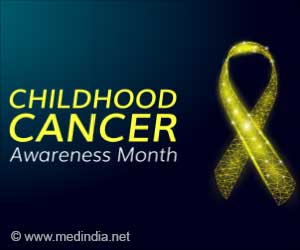Response to bridge therapy before consolidation therapy is associated may benefit patients showing poor response to other treatments.

Treating Neuroblastoma With Bridge Therapy
Neuroblastoma can often be cured by surgical removal of tumors followed by chemotherapy. These patients often receive induction therapy composed of various chemotherapy drugs and surgery, followed by consolidation therapy (given to kill any cancer cells that may be left in the body) involving high-dose chemotherapy plus stem cell transplants.‘Bridge therapy before consolidation therapy benefits patients with high-risk neuroblastoma (childhood cancer arising from nerves) with a poor response to induction.’





Unfortunately, these standard treatments are unsuccessful in many children. In these cases, a bridge therapy which might include immunotherapy drugs that have demonstrated anti-neuroblastoma activity combined with chemotherapy, radiolabeled MIBG (a therapy that delivers targeted radiation to neuroblastoma), or combinations of chemotherapeutic agents, could offer some benefit.To examine the benefits of a bridge therapy strategy for patients with high-risk neuroblastoma whose cancer was still evident after induction therapy, researchers examined data from 201 patients diagnosed at various hospitals from 2008 to 2018 with neuroblastoma who had residual disease after completing induction therapy.
Patients were treated in three groups with different approaches based on physician, institutional or family preferences. The first group is no bridging therapy before consolidation therapy, the second group is bridge therapy before consolidation therapy, and the third group comprises additional post-induction therapy without consolidation therapy.
The investigators were especially interested in evaluating if the addition of bridge therapy before consolidation with stem cell transplant improved the event-free survival or the time after treatment that cancer did not come back or get worse in patients with residual neuroblastoma at the end of induction therapy.
How Beneficial was Bridge Therapy?
Patients who directly underwent consolidation (group 1) had better responses to induction therapy than patients who received bridge therapy before consolidation (group 2).Event-free survival was similar in these two groups, however, suggesting that the addition of bridge therapy before consolidation therapy may benefit patients with a poor response to induction therapy.
Advertisement
Patients treated with post-induction therapy who did not receive consolidation therapy (group 3) experienced inferior event-free survival than patients in groups 1 or 2.
Advertisement
Prospective studies are needed to confirm these findings and to help identify which patients may have long-term survival without consolidation with autologous stem cell transplant.
Source-Medindia















